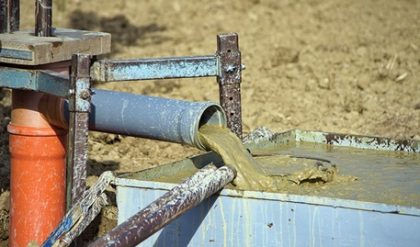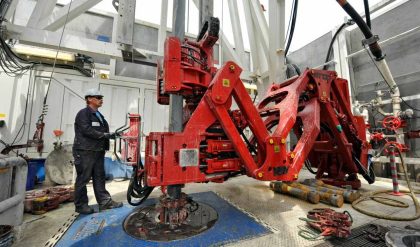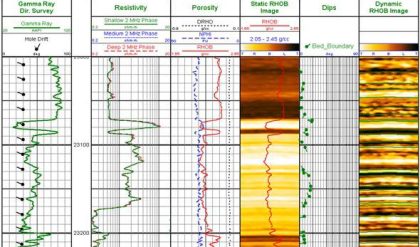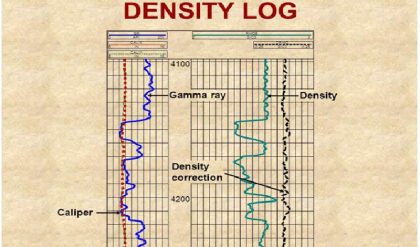The formation of hydrocarbon liquids from an organic rich source rock with kerogen and bitumen to accumulates as oil or gas.
Generation depends on three main factors:
- the presence of organic matter rich enough to yield hydrocarbons,
- adequate temperature,
- and sufficient time to bring the source rock to maturity.
- Pressure and the presence of bacteria and catalysts also affect generation.
- Generation is a critical phase in the development of a petroleum system.
Migration
The movement of hydrocarbons from their source into reservoir rocks.
- The movement of newly generated hydrocarbons out of their source rock is primary migration, also called expulsion.
- The further movement of the hydrocarbons into reservoir rock in a hydrocarbon trap or other area of accumulation is secondary migration.
- Migration typically occurs from a structurally low area to a higher area in the subsurface because of the relative buoyancy of hydrocarbons in comparison to the surrounding rock.
- Migration can be local or can occur along distances of hundreds of kilometres in large sedimentary basins, and is
- critical to the formation of a viable petroleum system.
Accumulation
The phase in the development of a petroleum system during which hydrocarbons migrate into and remain trapped in a reservoir.
Reservoir
A subsurface body of rock having sufficient porosity and permeability to store and transmit fluids.
- Sedimentary rocks are the most common reservoir rocks because they have more porosity than most igneous and metamorphic rocks and
- they form under temperature conditions at which hydrocarbons can be preserved.
- A reservoir is a critical component of a complete petroleum system.
Seal (cap rock)
An impermeable rock that acts as a barrier to further migration of hydrocarbon liquids.
Rocks that forms a barrier or cap above and around reservoir rock forming a trap such that fluids cannot migrate beyond the reservoir. The permeability of a seal capable of retaining fluids through geologic time is ~ 10-6 to 10-8 darcies. commonly
- shale, mudstone
- anhydrite
- salt,
- A seal is a critical component of a complete petroleum system.
Trap
A configuration of rocks suitable for containing hydrocarbons and sealed by a relatively impermeable formation through which hydrocarbons will not migrate.
Traps are described as
- structural traps
- Hydrocarbon traps that form in geologic structures such as folds and faults
- stratigraphic traps
- Hydrocarbon traps that result from changes in rock type or pinch-outs, unconformities, or other sedimentary features such as reefs or buildups
- A trap is an essential component of a petroleum system.






Comments are closed.